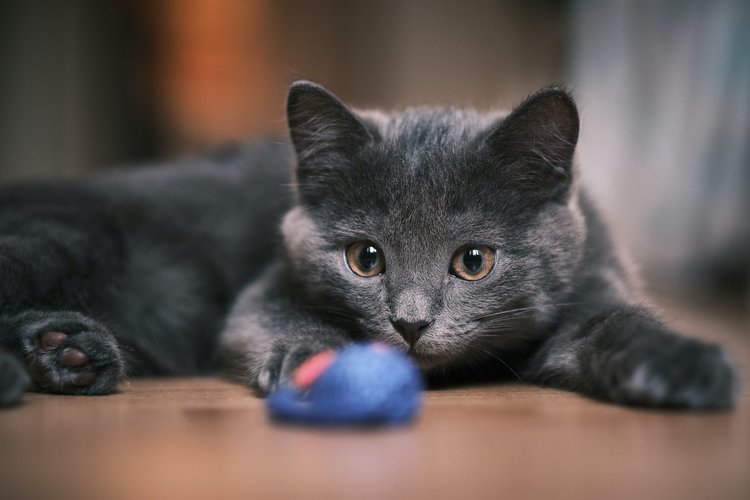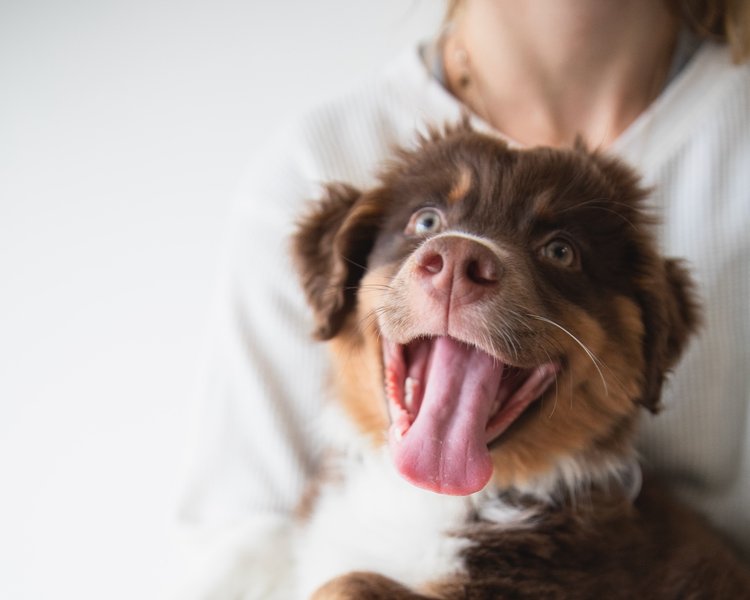Comparing human vision to animal vision recently got us thinking—how do the animals in our homes see us? The physiological makeup of cats’ and dogs’ eyes is interesting, but that doesn’t tell the whole story of how our pets truly see humans.
Read on to learn more about how certain animals use vision to perceive their human housemates.
How Cats’ and Dogs’ Eyes Work, Briefly
The eyes of a cat work pretty similarly to yours; central black pupils expand in low light and constrict in bright environments. The most noticeable difference—cats’ vertical slit pupils—evolved in nocturnal hunters to help them scan the horizon more effectively for prey.
Cats also have a reflective membranes called a “tapetum” over their retinas that act like a mirror, reflecting light into the eye for better night vision. Cats are mostly red-green colorblind, but they can see some green.
You could say that a dog’s eyes are even more similar to a human’s eyes. We share mostly the same components; round pupils, a colored iris, retinas, corneas, lenses, and sclera (the whites of the eye). Dogs also have a tapetum membrane, but unlike cats, they also have a third eyelid in the inner-corner that moves across the eye when a dog blinks to produce tears and protect against scratching.
And while the old myth that dogs only see in black and white isn’t true, they are technically colorblind. Dogs have dichromatic vision, meaning their brains only have two color receptors. Humans have three color receptors, allowing us to see a broad spectrum of colors from red to green to blue.
How Cats Visually Perceive Us
Petfinder may have put it best when they said that cats “either can’t tell human faces apart or just don’t care what we look like.”
Sounds like a good description of a cat’s general disposition, doesn’t it?
That doesn’t mean your cat doesn’t care who you are or can’t tell you apart from other humans, though. Rather than relying on facial recognition, cats actually identify us by the sound of our voice, our scent, and the way we physically feel to them.
The strange part of all of this is that cats actually view people as fellow cats. Some researchers believe cats look at us as big, slow, clumsy, uncoordinated cats, but others say they’re not quite so judgemental. The good thing is, whether or not they’re judging our balance and agility, they still love us! If a cat kneads your chest or belly, it’s mirroring an instinctive practice that stimulates milk production in a mother cat. In other words, if your cat makes biscuits with you, it looks at you as a maternal figure.
Similarly, when a cat rubs up against you as a greeting, you could think of it as a sign of respect. Research suggests that cats won’t do this to other cats that are “inferior” to them. Most cats see us as equals.
How Dogs Visually Perceive Us
Dogs see humans very differently than cats. It’s believed that dogs see humans as entirely different from other dogs based on their behavior because when a dog sees a human, its behavior changes pretty dramatically. For example, think about how dogs play with people compared to other dogs. Dogs are likely to roll over on their backs, wag their tails affectionately, and nuzzle their owners. These are all behaviors that pack animals like dogs generally don’t do so readily around other dogs.
Oddly enough, research suggests that dogs’ relationship with people often resembles the relationship between a human mother and her infant. Dogs rely on us for care, and their behavior usually reflects it. This means that your dog almost certainly sees you as its caregiver.
At the same time, dogs can distinguish between “good and bad” facial expressions, and react accordingly. You could go as far as to say that dogs can see and understand your mood. One study about the way dogs see us showed that dogs “react to your facial expressions in a part of the brain most commonly associated with reward processing.” Making you happy makes your dog happy!
Similar research also suggests that dogs see us as protectors, just like a toddler sees its mother. When a cat or horse gets spooked, it takes off. But when a dog is scared or startled, it typically runs to its owner.
Ensure You Can See Your Fur Babies for Life!
Getting a little misty-eyed thinking about your pets?
Make sure your vision is strong so you can see them as lovingly as they see you!
Get your eyes checked with a routine appointment today. Give us a call at 402.933.6600 or request an appointment online!





